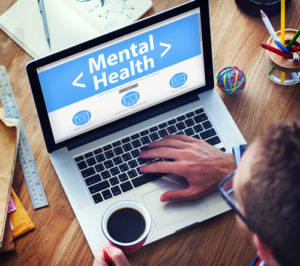An overwhelming majority (85 percent) of college students say they continue to experience increased stress and/or anxiety as a result of COVID-19, according to a new survey from telehealth company TimelyMD.
Of that majority, women report higher rates of coronavirus-related stress than men (93 percent vs. 78 percent).
Related content: Telehealth grant opportunities for universities
The top three causes of student stress and anxiety include: Students’ uncertainty about the future of their education (72 percent), fear of falling behind in coursework (61 percent), and experiencing struggles with remote learning (60 percent). Worries about future career and job prospects (50 percent) and fears about their health and/or the health of loved ones (49 percent) rounded out the top five most common concerns.
“Students’ mental health concerns do not take the summer off. The hazy outlook for a safe return to campus only adds to the emotional toll of students’ sustained feelings of fear, uncertainty and isolation relating to the coronavirus,” says Dr. Alan Dennington, chief medical officer at TimelyMD. “We have a responsibility to make sure students do not suffer alone no matter where they are, especially when three out of four are open to using telehealth for mental health counseling.”
The need for expanded mental health resources for college students is particularly urgent as plans to reopen many campuses this fall remain uncertain.
Despite the increase in stress and anxiety, only 21 percent of students surveyed reported seeking emotional support by talking in person or via telehealth to a licensed counselor or behavioral health professional.
The survey also offers insight into students’ coping mechanisms, concerns by region, and attitudes toward telehealth as a resource.
• Coping mechanisms: More than anything, students are turning to TV, movies and streaming services (65 percent) as a way to cope during the pandemic. This was especially true for women (72 percent vs. 58 percent of men). Other common coping mechanisms included video calls (59 percent), phone calls (58 percent), physical exercise (50 percent) and spending time outdoors (47 percent). Only 24 percent disconnected from social media and news.
• Regional differences: 84 percent of respondents in the Northeast said uncertainty about the future of their education was their top concern – 9 percent higher than the next closest region (the West). In the Southwest, 54 percent of students worried about how to pay for college due to financial hardship – 13 percent more than students than the next closest region (the West)
• Despite satisfaction, telehealth is underutilized: While only 35 percent of students surveyed have used telehealth for medical or mental health, 65 percent have been “satisfied” or “very satisfied” with their experience, which suggests there may be an awareness gap of this virtual resource offered by many colleges and universities.
The survey, conducted from May 29 to June 3, 2020, received 502 responses from students enrolled at two- and four-year institutions; 95 percent of students were between the ages of 18 and 23 years old.
- Students view AI with optimism, but women are at risk of being left behind - July 7, 2025
- 6 key cybersecurity hiring trends - July 3, 2025
- Digital innovation and human connection are reshaping higher ed - June 30, 2025
